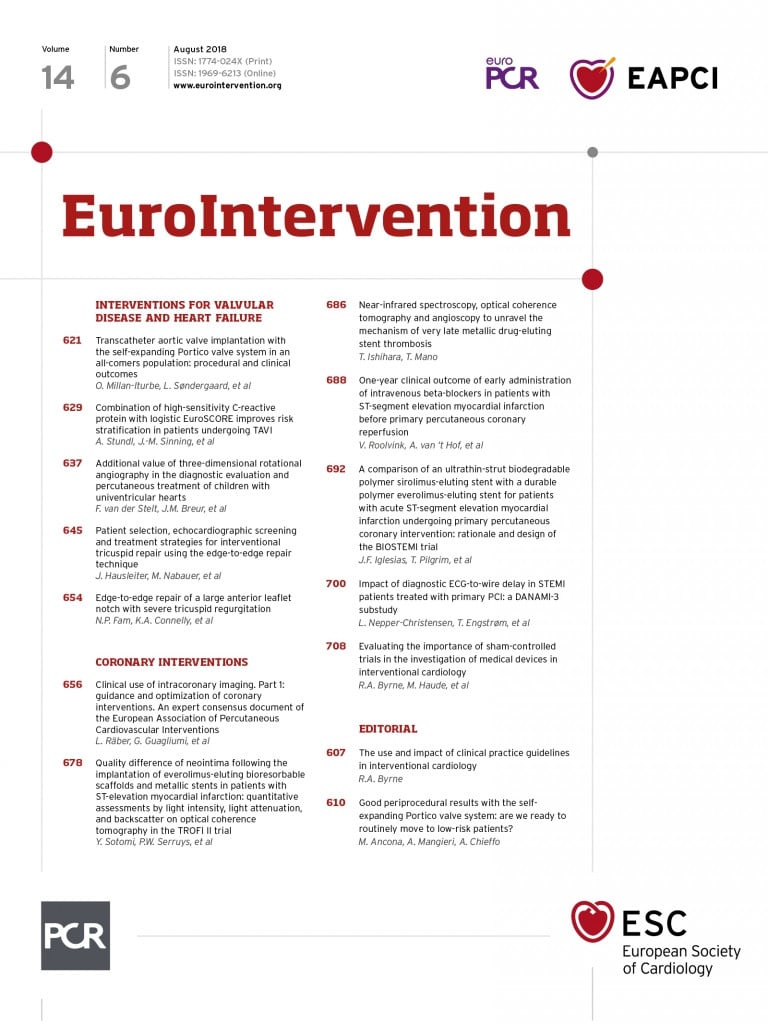
With great interest, we read the recent paper by Rashid et al1. Their meta-analysis of six observational studies revealed that leaflet thrombosis is associated with a significantly increased risk of adverse cerebrovascular events. With this important study, evidence is accumulating that (subclinical) valve thrombosis has important clinical consequences. Subclinical leaflet immobility and valve thrombosis have been reported with both transcatheter and surgical aortic valve bioprostheses, but more commonly in transcatheter than in surgical valves2,3. While leaflet thrombosis causing early valve failure occurs in just 1% of TAVR valves, subclinical valve thrombosis has been observed in 7%-10% of implanted TAVR valves4.
With increasing awareness of this problem, there is considerable debate about the relationship between these abnormalities, their incidence, time course and the optimal diagnostic imaging modality. However, uncertainty about predisposing pathophysiologic factors, clinical consequences and current therapeutic options remains. Bioprosthetic valve thrombosis appears to be a multifactorial process involving xenomaterials, patient-specific blood chemistry and complex flow patterns. However, the mechanistic basis of this phenomenon remains poorly understood. Maybe there is a specific mechanistic role for paravalvular leakage (PVL) as a primary trigger for increased thrombogenicity.
In a recent study, Van Belle et al monitored aortic regurgitation during TAVR and correlated von Willebrand factor multimer and point-of-care assessment of haemostasis with PVL. High-molecular-weight multimers of von Willebrand factor and the closure time with adenosine diphosphate (CT-ADP), a point-of-care measure of haemostasis, were not only predictive of the presence of PVL but were also associated with higher mortality one year after TAVR5. Other studies involving in vitro experiments evidenced thrombogenic potential of supra-physiologic regurgitant backflow velocities (RBV-MAX) in mechanical, bioprosthetic, and mock TAVR valves where simulated PVL triggered RBV-MAX valve closure transients of amplitude >200 metres/s and duration <20 ms6. Platelet activation may be induced especially by high shear stresses even with short exposure times7,8. Based on this, we believe that PVL with short duration high-velocity backflows and associated supra-physiologic shear forces increases prosthetic valve thrombogenicity.
With ongoing concerns about cerebrovascular events after TAVR, a more precise assessment of PVL might be critical to improve outcomes and guide effective antiplatelet or anticoagulation therapy after TAVR. Beyond the notion that valve thrombosis is a trigger for cerebrovascular events, the phenomenon has also recently been linked to an increased risk for structural valve degeneration4. Future research should focus on scrutinising a potential mechanistic link between PVL, platelet activation, valve thrombosis and cerebrovascular events on the one hand and structural valve degeneration on the other. Despite promising outcomes after TAVR with the newest-generation valves, prevention and treatment of (subclinical) leaflet thrombosis may offer opportunities for further improvement of clinical outcomes and valve durability.
Conflict of interest statement
R. Lange is a member of the Medtronic advisory board. S. Bleiziffer is a proctor and consultant for Medtronic, and a proctor for Boston Scientific, JenaValve Technology Inc., HighLife Inc. and Xpand Medical SAS. The other authors have no conflicts of interest to declare.

